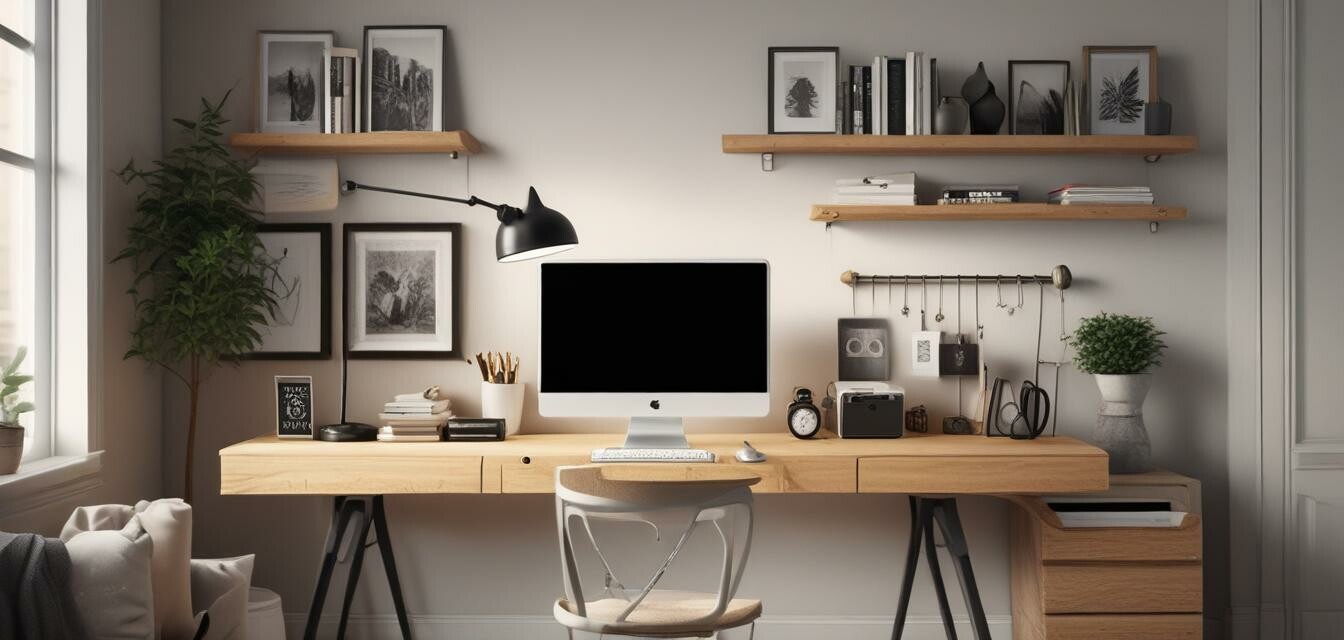
How to Choose the Right Desk for Your Work Style
Key Takeaways
- Understand your work style: seated, standing, or hybrid.
- Consider the space available in your home office.
- Evaluate ergonomics to promote comfort and productivity.
- Explore different styles and materials to match your preference.
- Budget wisely by considering both cost and quality.
Choosing the right desk is crucial for creating an effective home office. Your desk should not only meet your functional needs but also fit your work style and the space you have available. In this guide, we will explore the various factors to consider when selecting a desk that aligns perfectly with your working habits, whether you lean more towards sitting, standing, or prefer a hybrid approach.
Understanding Your Work Style
Your work style significantly influences the type of desk that will best serve you. Here are the primary work styles:
- Sitting: Traditional office setups where you work from a seated position.
- Standing: Desks that allow you to work while standing, reducing sedentariness.
- Hybrid: Adjustable desks that offer both sitting and standing options, catering to flexibility.
Benefits of Each Work Style
| Work Style | Benefits |
|---|---|
| Sitting |
|
| Standing |
|
| Hybrid |
|
Evaluating Your Space
Before making your decision, assess the space you have in your home office:
- Measure the dimensions of your workspace.
- Consider additional furniture you need, like chairs and storage units.
- Ensure there’s enough room to maneuver comfortably around the desk.
Types of Desks to Consider
Knowing your space and work style helps narrow down your choices. Here are several desk types to consider:
- Writing Desks: Simple structures for basic work needs.
- Computer Desks: Designed to hold computers and other technology.
- Corner Desks: Ideal for small spaces, utilizing corners efficiently.
- Standing Desks: Promote a healthier work posture.
- Adjustable Desks: Can modify between sitting and standing positions.
Consider Ergonomics
Ergonomics is vital in maintaining comfort and preventing strain during long hours of work. Consider the following ergonomic practices:
- Height: Ensure your desk allows your knees to fit comfortably below.
- Screen position: The monitor should be at eye level.
- Chair compatibility: Ensure your chair and desk work well together.
Explore Styles and Materials
Desks come in a variety of styles and materials that can enhance your office décor. From modern to traditional, here’s what to keep in mind:
- Wooden Desks: Provide a classic and warm atmosphere.
- Metal Desks: Offer durability and a modern appeal.
- Glass Desks: Create an airy, contemporary look.
Choosing the Right Style
Selecting a style that reflects your personality will make your workspace feel more inviting. Consider browsing our sections on office desks and decorative accessories for inspiration.
Budgeting for Your Desk
Your budget can significantly impact your choices. Here are some tips to keep in mind:
- Set a budget range before you start shopping.
- Research different options that fall within your budget.
- Don’t forget to consider quality over merely the price.
Where to Buy
When it comes to purchasing your desk, consider checking reliable online platforms. For a variety of options, visit our news and trends section.
Pros
- Creates a dedicated workspace.
- Enhances productivity and organization.
- A variety of styles allows personal expression.
Cons
- Can be a substantial investment.
- Requires periodic cleaning and maintenance.
Final Thoughts
Choosing the right desk for your work style is an investment in your productivity and comfort. Remember to evaluate your work habits, assess your space, consider ergonomics, and keep your budget in mind. By following the tips outlined in this guide, you'll be well-equipped to find the perfect desk for your home office.
Tips for Beginners
- Start with a basic desk and upgrade as needed.
- Sample both standing and sitting styles if possible.
- Use desk accessories to keep your workspace organized.